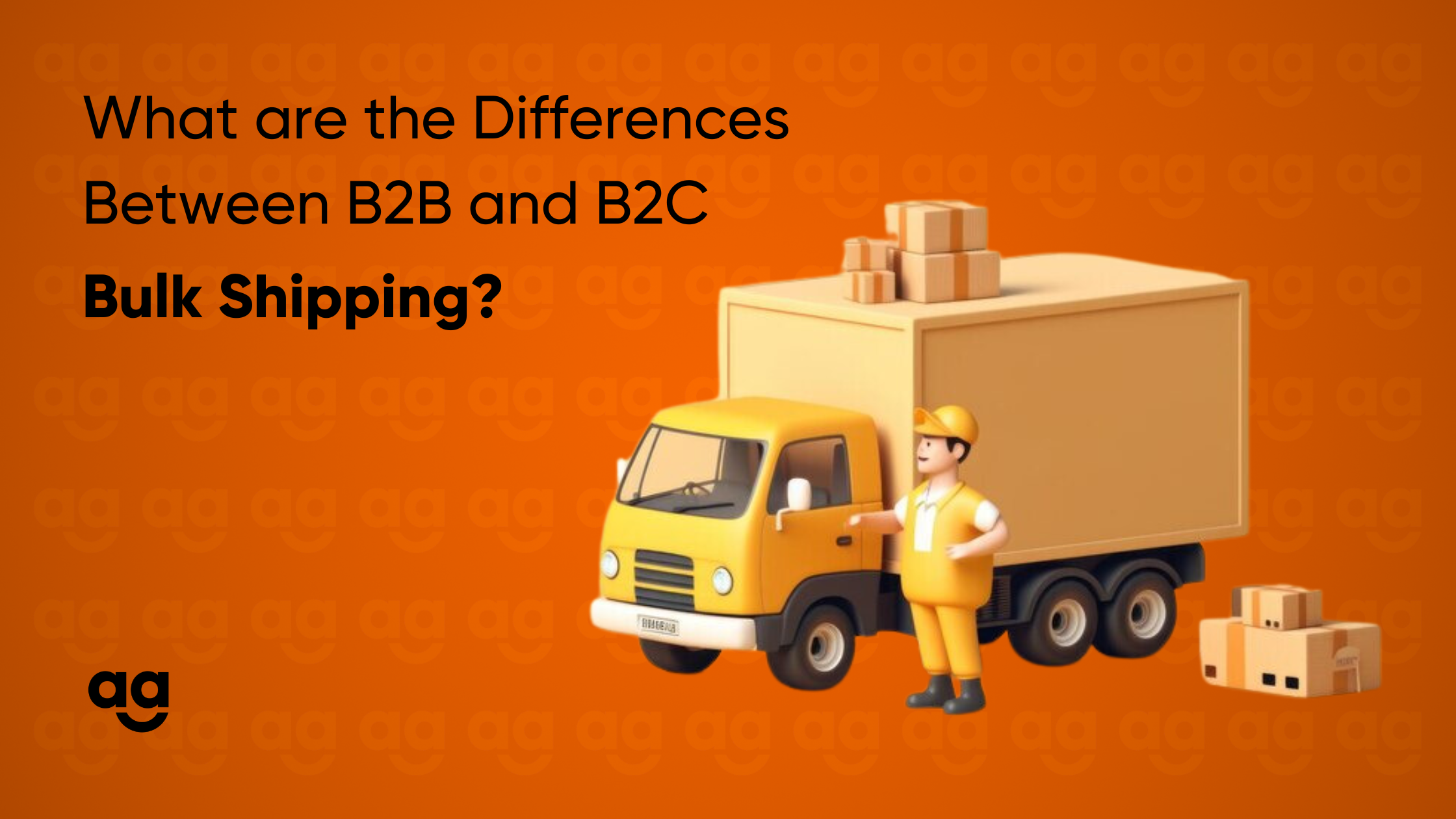Introduction
Shipping and delivery are vital elements for companies operating in both the B2B and B2C domains. However, the nature of each requirement generates a unique series of circumstances.
Whether you’re sending a fleet filled with raw materials to a business or delivering a bulk order to a customer, understanding these key differences between B2B and B2C bulk shipping is crucial for smooth sailing.
In this post, we’ll explore the key parameters and how each can be used depending on the category to keep your company one step ahead.
Read on!
B2B and B2C Shipping- An Overview
Firstly, let’s understand what B2B and B2C bulk shipping refer to:
- B2B bulk shipping involves transporting and delivering goods between businesses, typically involving quantities or volumes.
- B2C shipping focuses on delivering products to individual consumers.
In the case of B2B shipping, the main objective is to transport large quantities of goods from manufacturers or wholesalers to retailers or other businesses. A 2020 report indicated that the global B2B e-commerce market size was valued at USD 6.64 trillion.
Conversely, when it comes to B2C shipping, the emphasis remains on delivering products to individual consumers.
Difference between B2B and B2C shipping
Here is a tabulated overview of the key differences between B2B and B2C shipping:
Parameters |
B2B Shipping |
B2C Shipping |
| Shipping volume | Order size is considerably larger | Orders tend to be tailored |
| Shipping speed | Efficacy and reliability are key factors | Priority on speed and convenience |
| Delivery expectations | Meets expectations | Exceeds expectations |
| Packaging requirements | B2B packaging regulations are stringent, with frequent updates | B2C packaging regulations are much more flexible |
| Customer relations | Fostering and building long-term connections with clients | Frequently more transactional, although customer service is of high priority |
Here are some key points that further highlight the differences:
Shipping Volume and Scale
B2B bulk shipping involves handling quantities of goods compared to B2C shipping. In the B2B context, orders are typically placed in volumes or quantities due to the nature of business relationships. This directly affects how logistics planning, transportation methods, and storage needs are managed.
Shipping Speed and Delivery Expectations
Efficiency and dependability play a role in the world of B2B shipping because of the intricate supply chain and interconnected relationships between businesses. It is essential to meet agreed-upon delivery deadlines to ensure operations for all parties involved.
B2C shipping places a priority on customer satisfaction with a quick turnaround.
Nowadays, consumers have expectations when it comes to delivery, often anticipating same-day or next-day shipping. Fulfilling these expectations necessitates processes and efficient logistics operations.
Packaging and Labeling Requirements
Businesses must frequently abide by laws in the field of B2B shipping regarding the packaging and labeling of their products. B2C shipping provides some flexibility in terms of branding and packaging options. These regulations might involve things like using pallets following packaging sizes or having labels for different industries.
They have the opportunity to concentrate on developing packaging that improves the client experience. Service and efficient marketing are needed to ensure that every consumer has a positive delivery experience.
Customer Relationships and Communication
A study revealed that 89% of businesses compete primarily on the basis of customer experience. This highlights the vital role of communication and customer service in retaining and satisfying clients.
In the context of business, maintaining ties with organizations is crucial to commercial shipping. In these circumstances, communication and top-notch customer service are essential to long-term collaborations. Even when unexpected challenges develop, regular contact is essential to ensure order processing and timely delivery.
Conclusion
Various factors like shipment volume, speed, packaging requirements, and customer relationships present both opportunities and challenges in these two industries.
Understanding these distinctions allows businesses to tailor their strategies, optimize their logistics operations, and provide customers with an experience. By implementing the insights gained from this analysis, businesses can improve efficiency, meet customer expectations, and thrive in the evolving world of shipping and logistics.
If you are looking for a logistics enabler, Shipyaari is here to help. We specialize in analyzing aspects for businesses in order to determine the most suitable shipping model that aligns with their target audience and objectives.
Get in touch to learn more!







 Shipping
Shipping







